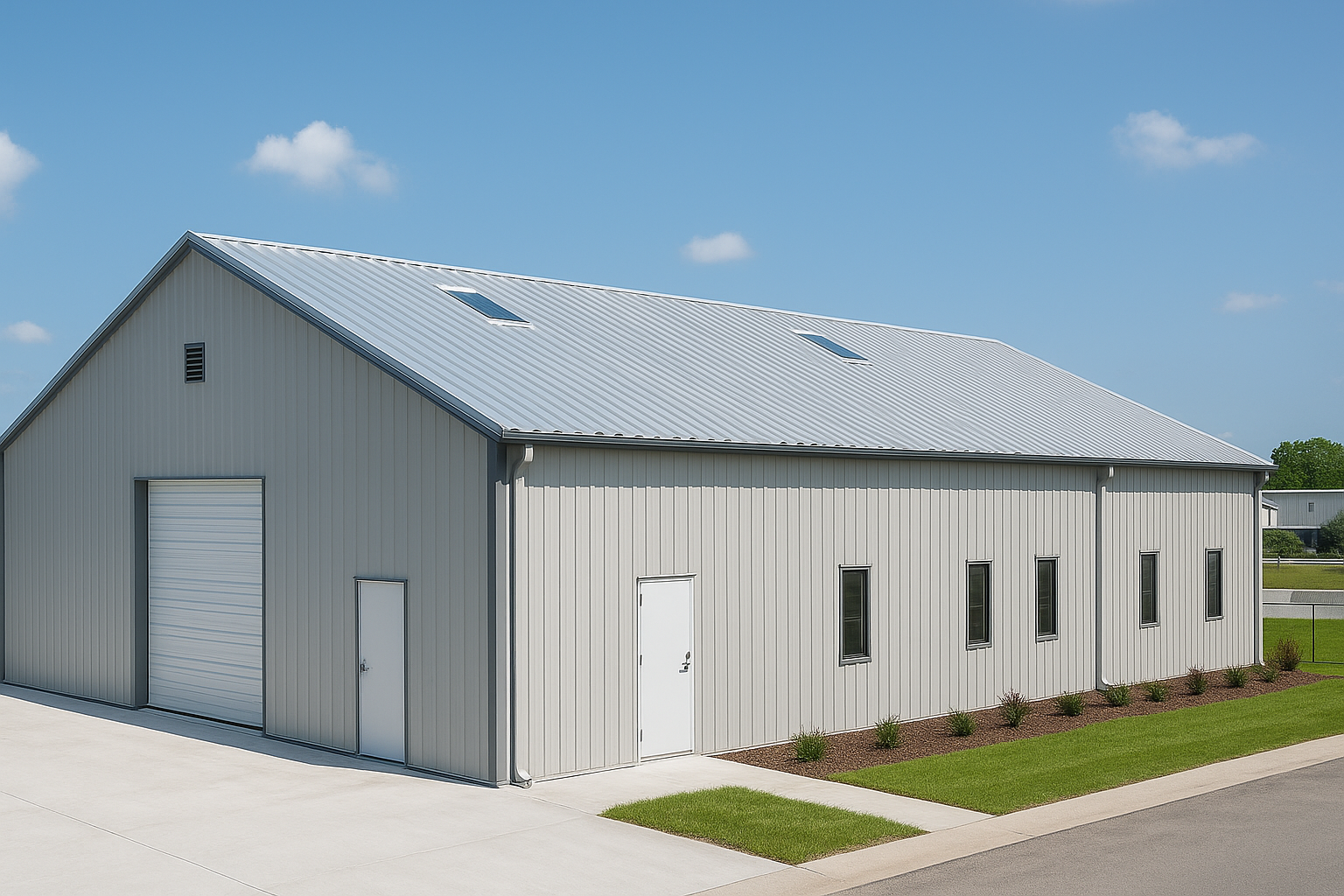
Smart strategies for lower operating costs and long-term building performance
Energy efficient commercial steel buildings are no longer a luxury. They’re a necessity. As energy codes tighten and utility costs rise, businesses are looking for smarter ways to reduce operational expenses and environmental impact. That begins with the right design.
At our prefabricated commercial metal building company, energy performance isn’t an afterthought. It’s built into our systems from the ground up, starting with structural planning and continuing through component selection. This guide outlines what matters most when designing a steel building that performs efficiently for decades.
Most energy-saving opportunities are won or lost in the planning phase. Once a building is up, retrofitting systems or upgrading materials becomes more expensive and disruptive. That’s why MBMI Metal Buildings prioritizes performance from the beginning.
Energy efficient commercial steel buildings take advantage of design flexibility to minimize waste, maximize insulation, and reduce unnecessary heating or cooling needs. Choosing the right size, shape, and orientation can improve airflow and solar performance, all while supporting your business goals.
No feature affects thermal performance more than insulation. The right insulation system will help regulate temperature, improve indoor air quality, and reduce HVAC costs across seasons.
Popular commercial insulation options include:
At MBMI, we offer tailored insulation packages based on regional climate and building use. Whether you’re building a warehouse, office, or showroom, we help you reach optimal R-values without overspending.
Learn more about commercial insulation standards from the U.S. Department of Energy, and check out our guide to commercial steel building insulation.
Cool roofing strategies can reduce the temperature inside your building by up to 30 degrees in warm climates. That translates to significant savings on air conditioning.
MBMI offers Galvalume+ roof panels as a standard feature. These panels:
Combined with light-colored coatings or reflective membranes, they help your building maintain a stable internal temperature, especially important for large-span commercial spaces.
Doors are one of the most overlooked sources of energy loss. MBMI walk doors come fully insulated and weather-sealed as standard, not as a costly upgrade.
Our doors feature:
This reduces thermal transfer, minimizes drafts, and helps maintain internal climate conditions without overworking your HVAC system.
Steel buildings that breathe well perform better. Ventilation and lighting choices impact not just energy use but occupant comfort and productivity.
Energy-efficient ventilation strategies include:
When it comes to lighting, translucent wall panels and well-placed windows reduce the need for artificial light. MBMI can include these in your framing plans to optimize daylight without compromising insulation or security.
The position of your building relative to the sun makes a surprising difference. South-facing walls receive more solar exposure in North America, which can be beneficial or problematic depending on your climate.
Strategies to consider:
These passive design elements are especially important for offices or retail spaces where human comfort is a top priority.
Energy efficient commercial steel buildings aren’t built by accident. They result from purposeful design, quality components, and an understanding of real-world performance. MBMI makes this easy by including many high-efficiency features as standard:
Our in-house engineering team also ensures that your building meets or exceeds local energy codes from day one.
Energy efficiency starts with smart design. From insulation and ventilation to site orientation and high-performance components, MBMI is committed to helping clients build structures that last longer and cost less to operate.
Want help designing your next energy efficient commercial steel building? Contact MBMI to start the process with a partner who delivers more than just materials.